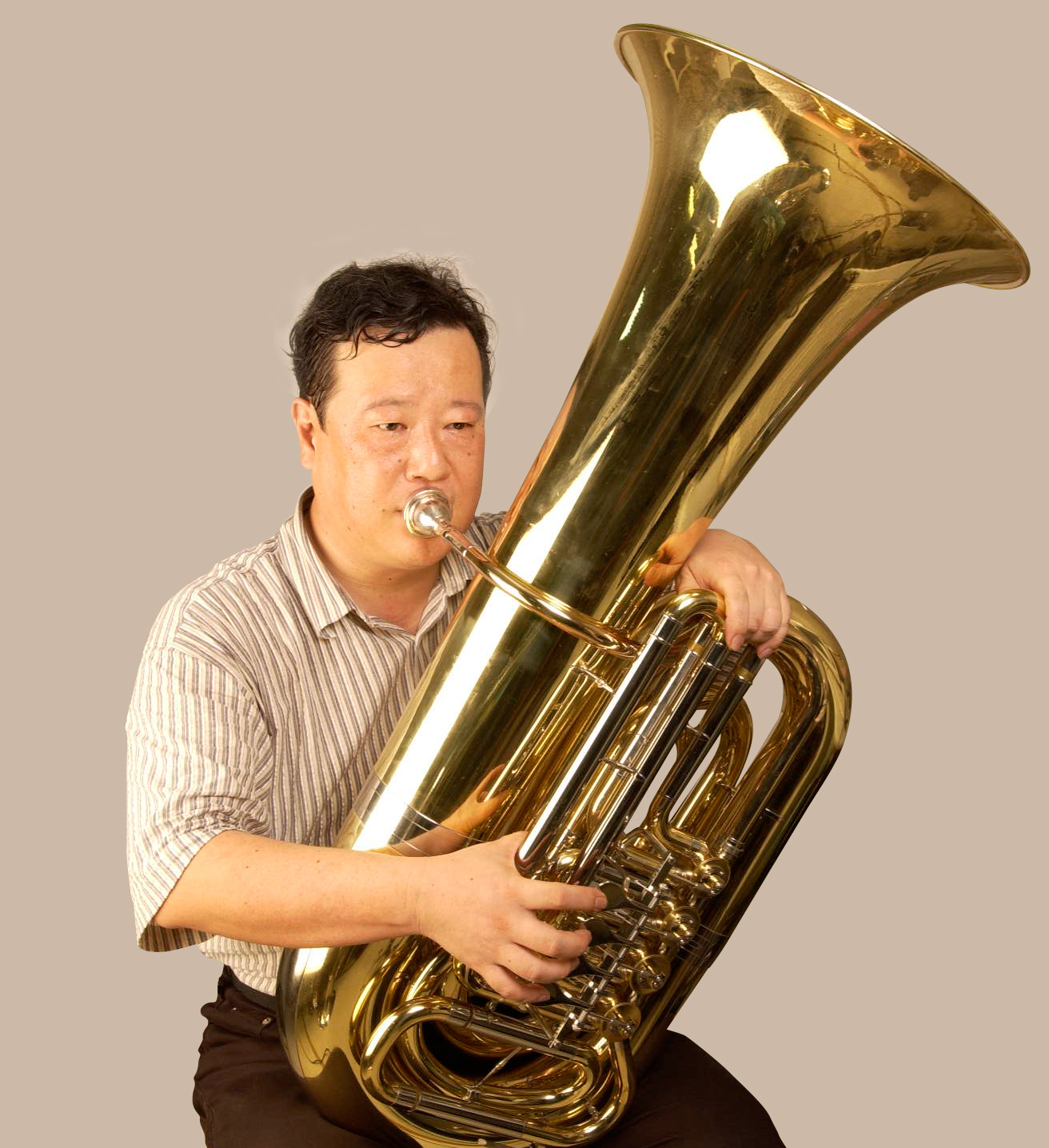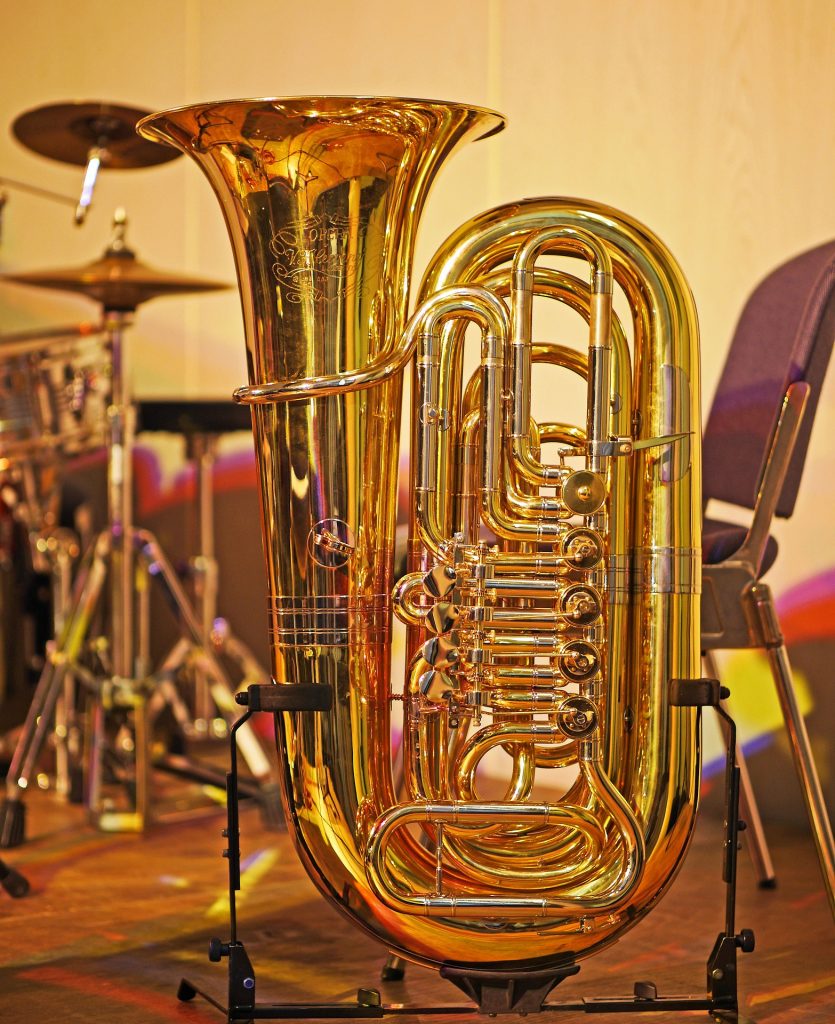Can a single instrument truly be the cornerstone of an entire musical section, shaping the sonic landscape with both power and grace? The tuba, the undisputed monarch of the brass family, not only claims this role but also continues to evolve, offering a diverse range of sounds and applications that captivate audiences worldwide.
From the resounding depths of the orchestra to the vibrant energy of the marching band, the tuba's influence is undeniable. Its presence, a symphony of air and metal, forms the bedrock upon which countless musical compositions are built. But beyond its foundational role, the tuba possesses a fascinating history and a surprising versatility that often goes unappreciated. The purpose of this article is to explore the depths of the tuba. Delving into its origins, different types, and the crucial role it plays in contemporary music.
To fully appreciate the tuba, its crucial to understand its diverse forms and the roles they play within different musical settings. The evolution of the tuba has led to several distinct types, each with its own unique characteristics and applications.
- Azzi Fudd Latest News Updates Uconn Huskies Star
- Kim Marie Kessler The Life Of Randy Ortons Wife Bio Net Worth
Bass Tuba: The Genesis of the Deep
The bass tuba, the progenitor of all future tubas, typically tuned to either E or F, with the former being more popular in the United States and the latter in Europe. Invented in the 1840s, its sole aim was to bridge the gap between the bass tuba and the trombone. Most early music for the tuba was written for a bass tuba, and this has kept the instrument from becoming extinct in favor of the contrabass. The bass tuba became famous in the 19th century as most written music could only be played with it. Today you will find most professional tuba players owning both a bass and contrabass tuba as there are compositions that have parts requiring both or one of them.
Contrabass Tuba: Dominating the Low End
- Unveiling Emily Feld Model Influencer More Bio Facts
- Pastor Jamal Bryant News Sermons Latest Updates Stay Informed
Producing the lowest pitch in the brass family, the contrabass tuba typically comes in C or B keys. Today, the contrabass tuba is the most popular choice for musicians globally. It often replaces the bass tuba in orchestras and other compositions. Tubists switch back to the bass tuba only if a specific sound cant be replicated on the contrabass tuba. The B tuba is the most commonly used tuba in concert bands and marching bands. It is the largest tuba and produces the lowest pitch among the different types. The B tuba has a deep, rich sound, making it ideal for providing the bass foundation in large ensembles.
Euphonium (Tenor Tuba): A Versatile Voice
Sometimes referred to as a tenor tuba, the euphonium is pitched in B, one octave higher than the B contrabass tuba. It is a versatile instrument, often featured as a solo voice in concert bands and brass bands.
Other Notable Tuba Variants
The C tuba, a tenor tuba pitched in C, is widely used in professional orchestras. The E tuba is also a good solo instrument for experienced professional players who want an instrument that is even more responsive and clearer tonally than a C tuba. The small Swiss tuba in C is a tenor tuba pitched in C, and provided with 6 valves.
Playing the Tuba: A Symphony of Skill
Mastering the tuba requires a combination of physical prowess, technical skill, and musical sensitivity. The tuba's large size and demanding airflow requirements can be a challenge for beginners. However, with proper instruction and consistent practice, anyone can learn to produce beautiful music on this instrument.
The Tuba's Range: A Deep Dive
The tubas range typically spans over four octaves, though the upper registers accessibility depends heavily on the players skill. The instruments design, particularly its wide bore, allows experienced players to easily produce pedal tones, which lie even lower than the standard range.
The Tuba in Music: Beyond the Basics
The tuba is an integral part of the orchestra, providing the foundation for the brass section and adding depth and resonance to the overall sound. In concert bands and marching bands, the tuba's role is even more pronounced, as it often carries the bass line and provides rhythmic support. The tuba's versatility allows it to be used in a variety of musical genres, from classical to jazz, rock, and even pop music.
Understanding the technical aspects of the tuba is important. The instrument's construction, including the size of the bore, the length of the tubing, and the number of valves, significantly impacts its sound and playability.
Tuba Construction: A Deep Dive
The tuba's large size and complex construction contribute to its rich and powerful sound. Tubas are typically made of brass, although some may have silver or gold plating. The instruments tubing, which can extend to over 18 feet in length, is carefully coiled to fit within a manageable size. The number of valves varies, but most tubas have three to four valves, which are used to change the pitch of the instrument.
The Significance of the Tuba's Bore
The tuba's bore, the internal diameter of the tubing, is another crucial factor in its sound production. Wider bores typically produce a darker, richer tone, while narrower bores tend to be brighter and more focused. The choice of bore size often depends on the player's preference and the musical context.
Tuba Valves: The Keys to Pitch
Valves play a vital role in controlling the tuba's pitch by redirecting the airflow through different lengths of tubing. Pressing a valve creates a different length of tubing, which lowers the pitch of the note. The arrangement of valves, and how they are used in combination, allows the tuba to play a wide range of notes.
Tuba Maintenance: Keeping the Sound Alive
Proper maintenance is essential for keeping the tuba in top playing condition. Regular cleaning, lubrication, and occasional professional servicing are necessary to ensure that the instrument continues to produce its best sound.
The tuba: A Journey Through Time
The tubas story began in the mid-19th century. Born from a need to improve the lower registers of brass bands and orchestras. Its invention revolutionized the way composers could write for the bass voice in musical ensembles.
The tuba's history is rich with innovation, from the early valved instruments to the modern contrabass tubas that dominate the orchestral landscape. These instruments have undergone several revisions over time, as instrument makers sought to improve their sound quality, playability, and range.
Tuba's Role in Musical Composition
Initially, the tuba was employed in military bands to provide a powerful bass line. However, it swiftly found its way into orchestras, where its deep, resonant sound quickly became essential. The tuba allowed composers to explore new sonic territories, enriching the orchestral palette.
Composers like Richard Wagner and Gustav Mahler embraced the tuba, writing prominent parts for the instrument that showcased its unique voice. The tuba soon became a standard fixture in the orchestral brass section, with the bass tuba being the most common type in early compositions.
As the 20th century arrived, the tuba's role continued to expand. Jazz musicians adopted it, and composers started using it in a wider array of genres.
Tuba in Contemporary Music
Today, the tuba is used in a variety of musical styles, including classical, jazz, rock, and pop. It can be featured as a solo instrument, as well as an essential member of brass bands, orchestras, and marching bands.
3 Popular Alternatives to the Tuba
While the tuba reigns supreme as the king of the low brass, several other instruments offer unique sounds and playing experiences. Here are three popular alternatives:
1. Sousaphone
The sousaphone, a variant of the tuba, is designed specifically for marching bands. It is coiled around the player's body and has a large, upward-facing bell, allowing the sound to project over the heads of the musicians. The sousaphone is often used in marching bands and other outdoor ensembles.
2. Euphonium
As discussed earlier, the euphonium is a tenor-voiced instrument, offering a versatile voice and often featured as a solo voice in concert bands and brass bands. The euphonium provides a rich and lyrical sound that complements the tuba in many ensemble settings.
3. Baritone Horn
The baritone horn, similar in size and range to the euphonium, is often used in brass bands. It has a more compact design and a slightly different sound than the euphonium, but offers a similarly expressive voice.
Tuba Facts and Figures
The tuba's imposing presence and its fundamental role in music have made it a subject of fascination for musicians and listeners alike. Here are some interesting facts about the instrument:
1. Size and Weight: The tuba is the largest brass instrument, and the contrabass tuba can weigh up to 30 pounds.
2. Length of Tubing: The tubing in a tuba can extend to over 18 feet in length, coiled into a compact form.
3. Low Notes: The tuba can produce some of the lowest notes in the brass family, often going below the range of a cello.
4. Orchestral Foundation: The tuba is often considered the foundation of any brass section in orchestras and marching bands.
5. Cost: The price of a tuba can vary greatly depending on the make, model, and materials used, but it is generally a significant investment.
6. Tuba's Unique Sound: It is considered the only instrument, apart from the double bass, that has the ability to go below a cello.
The Tuba's Future: An Ongoing Symphony
The tuba's future in music is bright. With ongoing innovations in instrument design and a growing appreciation for its unique sound, the tuba is likely to remain a vital component of musical ensembles for years to come. Its versatility and the passionate dedication of its players ensure that the tuba will continue to resonate with audiences worldwide.



Detail Author:
- Name : Lauriane Bashirian
- Username : mohr.trevor
- Email : urban.senger@jaskolski.info
- Birthdate : 1982-03-20
- Address : 497 Jacklyn Road West Stewartshire, VA 40480-2616
- Phone : +1-478-330-7318
- Company : Gislason-Huel
- Job : Restaurant Cook
- Bio : Id consequatur in ea iusto aut consequatur reprehenderit. Rerum at exercitationem doloribus neque accusamus. Magni quam numquam dolores dignissimos adipisci.
Socials
tiktok:
- url : https://tiktok.com/@nadia_dach
- username : nadia_dach
- bio : Et qui et provident veniam.
- followers : 2511
- following : 1792
linkedin:
- url : https://linkedin.com/in/dach1983
- username : dach1983
- bio : Et ut harum quo quis esse officia.
- followers : 2349
- following : 335
twitter:
- url : https://twitter.com/nadia_id
- username : nadia_id
- bio : Repellat necessitatibus ipsa aut et vitae assumenda aperiam. Minus quis ea atque a unde repellendus possimus. Qui modi nostrum est dolorem consequatur et.
- followers : 217
- following : 966
facebook:
- url : https://facebook.com/nadiadach
- username : nadiadach
- bio : Vel et expedita voluptatibus rerum molestiae molestiae rem.
- followers : 3438
- following : 1080